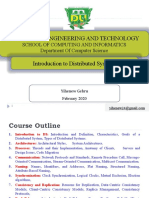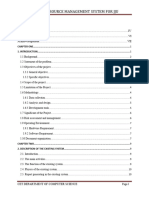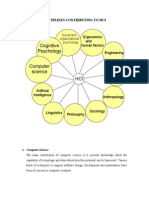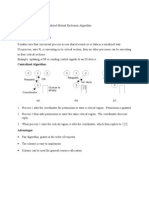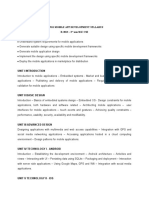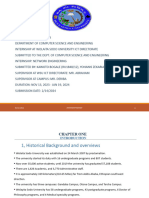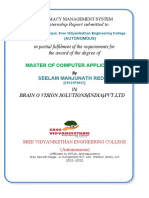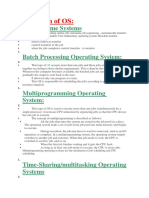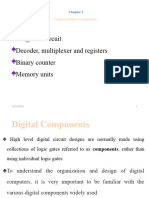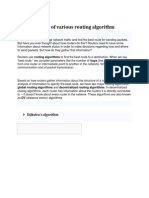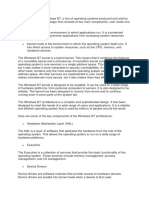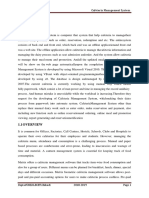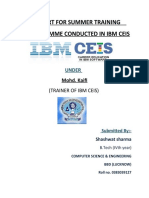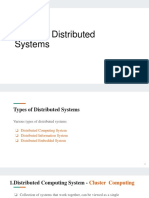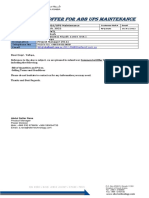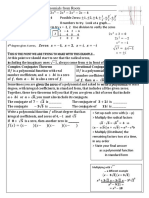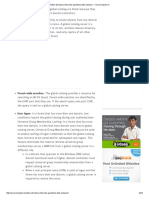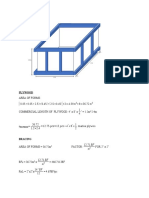0% found this document useful (0 votes)
1K views21 pagesTypes of Distributed Systems
The document discusses different types of distributed systems including distributed computing systems like clusters, grids, and clouds. It also covers distributed information systems focusing on transaction processing systems and enterprise application integration. Finally, it describes distributed embedded systems such as home systems, electronic health care systems, and sensor networks.
Uploaded by
GARIMA SINGHCopyright
© © All Rights Reserved
We take content rights seriously. If you suspect this is your content, claim it here.
Available Formats
Download as PDF, TXT or read online on Scribd
0% found this document useful (0 votes)
1K views21 pagesTypes of Distributed Systems
The document discusses different types of distributed systems including distributed computing systems like clusters, grids, and clouds. It also covers distributed information systems focusing on transaction processing systems and enterprise application integration. Finally, it describes distributed embedded systems such as home systems, electronic health care systems, and sensor networks.
Uploaded by
GARIMA SINGHCopyright
© © All Rights Reserved
We take content rights seriously. If you suspect this is your content, claim it here.
Available Formats
Download as PDF, TXT or read online on Scribd
/ 21

